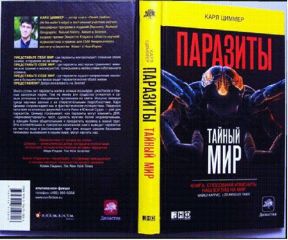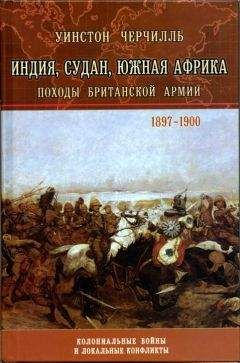Miller, L. H. 1996. Protective selective pressure. Nature 383:480–481.
Minchella, D. J. 1985. Host life-history variation in response to parasitism. Parasitology 90:205–216.
Møller, A. P. 1993. A fungus infecting domestic flies manipulates sexual behavior. Behavioral Ecology and Sociobiology 33:403–407.
_____. 1999. Parasitism, host immune function, and sexual selection. Quarterly Review of Biology 74:3–20.
Moore, J. 1983. Response to an avian predator and its isopod prey to an acanthocephalan parasite. Ecology 64(5):1000–1015.
_____. 1995. The behavior of parasitized animals. BioScience 45(2):89–98.
_____, and N. J. Gotelli. 1996. Evolutionary patterns of altered behavior and susceptibility in parasitized hosts. Evolution 50(2):807–819.
Mooring, M. S., and B. L. Hart. 1992. Animal grouping for protection from parasites: selfish herd and encounter-dilution effects. Behavior 123:173–193.
Morell, V. 1999. Are pathogens felling frogs? Science 284:728–731.
Muller, C. B., and P. Schmid-Hempel. 1993. Exploitation of cold temperature as defense against parasitoids in bumblebees. Nature 363:65–67.
Muller, M., and W. Martin. 1999. The genome of Rickettsia prowazekii and some thoughts on the origin of mitochondria and hydrogenosomes. BioEssays, 21:377–381.
Naitza, S., F. Spano, K. J. H. Robson, and A. Cristranti. 1998. The thrombospondin-related protein family of apicomplexan parasites: The gears of the cell invasion machinery. Parasitology Today 14:479–484.
Nelson, G. S. 1990. Human behavior and the epidemiology of helminth infections: Cultural practices and microepidemiology. In Parasitism and host behavior, edited by C. J. Barnard and J. M. Behnke. London: Taylor & Francis.
Newman, A. 1999. In pursuit of an autoimmune worm cure. The New York Times, August 31, 1999, 5.
Niebel, A., G. Gheysen, and M. Van Montagu. 1994. Plant-cyst nematode and plant-root-knot nematode interactions. Parasitology Today 10(11):424–430.
Nokes, C., S. M. Grantham-McGregor, A. W. Sawyer, E. S. Cooper, B. A. Robinson, and D. A. P. Bundy. 1992. Moderate to heavy infections of Trichuris trichiura affect cognitive function in Jamaican school children. Parasitology 104:539–547.
O'Brien, J., and D. M. Skinner. 1990. Overriding of the molt-inducing stimulus of multiple limb autotomy in the mud crab Rhithropanopeus harrisii by parasitization with a rhizocephalan. Journal of Crustacean Biology 10(3):440–445.
_____, and P. Van Wyk. 1986. Effects of crustacean parasitic castrators (epicaridean isopods and rhizocephalan barnacles) on growth of crustacean hosts. In Crustacean Issues 3, edited by A. Wenner.
Penn, D., and W. K. Potts. 1998. Chemical signals and parasite-mediated sexual selection. Trends in Ecology and Evolution 13:391–396.
Pennisi, E. 1998. A genomic battle of the sexes. Science 281:1984–1985.
Peries, H., and S. Cairncross. 1997. Global eradication of guinea worm. Parasitology Today 13(11):431–437.
Poirier, S. R., M. E. Rau, and X. Wang. 1995. Diel locomotor activity of deer mice (Peromyscus maniculatus) infected with Trichinella nativa or Trichinella pseudospiralis. Canadian Journal of Zoology 73:1323–1334.
Polak, M., and W. T. Starmer. 1998. Parasite-induced risk of mortality elevates reproductive effort in male Drosophila. Proceedings of the Royal Society of London B 265:2197–2201.
Polvere, R. I., C. A. Kabbash, V. A. Capo, I. Kadan, and D. D. Despommier. 1997. Trichinella spiralis: Synthesis of type IV and type VI collagen during nurse cell formation. Experimental Parasitology 86:191–199.
Poulin, R. 1994. The evolution of parasite manipulation of host behavior: A theoretical analysis. Parasitology 109:S109–S118.
_____. 1995. Phylogeny, ecology, and the richness of parasite communities in vertebrates. Ecological Monographs 65(3):283–302.
_____. 1998. Evolutionary ecology of parasites: From individuals to communities. London: Chapman & Hall.
Press, M. C., and J. D. Graves, eds. 1995. Parasitic plants. London: Chapman & Hall.
Raibaut, A., and J. P. Trilles. 1993. The sexuality of parasitic crustaceans. Advances in Parasitology 32:367–444.
Rau, M. E. 1983. The open-field behavior of mice infected with Trichinella spiralis. Parasitology 86:311–318.
_____, and F. R. Caron. 1979. Parasite-induced susceptibility of moose to hunting. Canadian Journal of Zoology 57:2466–2468.
Read, A. F., and A. Skorping. 1995. The evolution of tissue migration by parasitic nematode larvae. Parasitology 111:359–371.
Ribeiro, J. M. C. 1995. Blood-feeding arthropods: Live syringes or invertebrate pharmacologists? Infectious Agents and Disease 4:143–152.
Ridley, M. 1993. The Red Queen: Sex and the evolution of human nature. New York: Penguin.
Robb, T., and M. L. Reid. 1996. Parasite-induced changes in the behavior of cestode-infected beetles: Adaptation or simple pathology? Canadian Journal of Zoology 1268–1274.
Roberts, L. S., and J. Janovy. 2000. Gerald D. Schmidt and Larry Roberts' Foundation of Parasitology. 6th ed. Dubuque, IA: McGraw-Hill.
Robertson, H. M. 1997. Multiple mariner transposons in flatworms and hydras are related to those of insects. Journal of Heredity 88:195–201.
Robinson, J. 1962. Pilobolus spp. and the translation of the infective larvae of Dictyocaulus viviparus from feces to pastures. Nature 193:353–354.
Rohde, K. 1994. Niche restriction in parasites: Proximate and ultimate causes. Parasitology 109:S69–S84.
Roos, D. S., M. J. Crawford, R. G. K. Donald, J. C. Kissinger, L. J. Klimczak, and B. Striepen. 1999. Origin, targeting, and function of the apicomplexan plastid. Current Opinion in Microbiology 2:426–432.
Ross, R., and D. Thomson. 1910. A case of sleeping sickness studied by precise enumerative methods: Further observations. Proceedings of the Royal Society for Tropical Medicine 82:395–409.
Roth, D. B., and N. L. Craig. 1998. VDJ recombination: A transposase goes to work. Cell 94:411–414.
Roy, B. A. 1993. Floral mimicry by a plant pathogen. Nature 362:56–58.
Russell, P. F. 1955. Man's mastery of malaria. Oxford: Oxford University Press.
Schantz, T. von, H. Wittzell, G. Goransson, M. Grahn, and K. Persson. 1996. MHC genotype and male ornamentation: Genetic evidence for the Hamilton-Zuk model. Proceedings of the Royal Society of London B 263:265–271.
Schofield, A. E., D. M. Reardon, and M. J. A. Tanner. 1992. Defective anion transport activity of the abnormal band 3 in hereditary ovalocytic red blood cells. Nature 355:836–838.
Schrag, S. J., A. Mooers, G. T. Ndifon, and A. F. Read. 1994a. Ecological correlates of male outcrossing ability in a simultaneous hermaphrodite snail. American Naturalist 143:636–655.
_____, G. T. Ndifon, and A. F. Read. 1994b. Temperature-determined outcrossing ability in wild populations of a simultaneous her-maphrodite snail. Ecology 75:2066–2077.
Senok, A. C., K. Li, E. A. S. Nelson, L. M. Yu, L. P. Tian, and S. J. Oppenheimer. 1997. Invasion and growth of Plasmodium falciparum is inhibited in fractionated thalassaemic erythrocytes. Transactions of the Royal Society of Tropical Medicine and Hygiene 91:138–143.
Sher, A. 1995. Regulation of cell-mediated immunity by parasites: The ups and downs of an important host adaptation. In Molecular Approaches to Parasitology, edited by J. C. Boothroyd and R. Komuniecki. New York: Wiley-Liss.
Sheratt, D. J., ed. 1995. Mobile genetic elements. New York: IRL Press.
Shi, Y. P., S. E. Hasnain, J. B. Sacci, B. P. Holloway, J. Fujioka, N. Kumar, R. Wohlheuter, S. L. Hoffman, W. E. Collins, and A. A. Lal. 1999. Immunogenicity and in vitro protective efficacy of a recombinant multistage Plasmodium falciparum candidate vaccine. Proceedings of the National Academy of Sciences 96:15–20.
Shorthouse, J. D., and O. Rohfritsch, eds. 1992. Biology of Insect-Induced Galls. Oxford: Oxford University Press.
Simberloff, D., and P. Stiling. 1996. How risky is biological control? Ecology 77 (7):1965–1974.
Sinden, R. E. 1985. A cell biologist's view of host cell recognition and invasion by malarial parasites. Transactions of the Royal Society of Tropical Medicine and Hygiene 79:598–605.
Sorci, G., and J. Clobert. 1995. Effects of maternal parasite load on offspring life-history traits in the common lizard (Lacerta vivipara). Journal of Evolutionary Biology 8:711–723.
Spithill, T. W., and J. P. Dalton. 1998. Progress in development of liver fluke vaccine. Parasitology Today 14 (6):224–228.
Steenstrup, J. 1845. On the alternation of generations; or The propagation and development of animals through alternate generations: A peculiar form of fostering the young in the lower classes of animals. London: The Ray Society.
Stevens, J. R., and W. Gibson. 1999. The molecular evolution of trypanosomes. Parasitology Today 15:432–436.
Stewart, G. R., and M. C. Press. 1990. The physiology and biochemistry of parasitic angiosperms. Annual Review of Plant Physiology and Plant Molecular Biology 41:127–151.
Strand, M. R., and M. Grbic. 1997. The life history and development of polyembryonic parasitoids. In Parasites and Pathogens: Effects on Host Hormones and Behavior, edited by N. E. Beckage. New York: Chapman & Hall.
Stunkard, H. W. 1955. Freedom, bondage, and the welfare state. Science 121:811–816.
Su, X., L. A. Kirkman, H. Fujioka, and T. E. Wellems. 1997. Complex polymorphisms in an ˜330 kDa protein are linked to chlorquine-resistant P. falciparum in Southeast Asia and Africa. Cell 91:593–603.
Sukhdeo, M. V. K. 1997. Earth's third environment: The worm's eye view. BioScience 47 (3):141–52.
Sukhdeo, S. C., M. V. K. Sukhdeo, M. B. Black, and R. C. Vrijenhoek. 1997. The evolution of tissue migration in parasitic nematodes (Nematoda: Strongylida) inferred from a protein-coding mitochondrial gene. Biological Journal of the Linnean Society 61:281–298.
Sures, B., R. Siddall, and H. Taraschewski. 1999. Parasites as accumulation indicators of heavy metal polluters. Parasitology Today 15:16–21.
Taylor, M. I., G. Turner, R. L. Robinson, and J. R. Stauffer. 1998. Sexual selection, parasites, and bower height skew in a bower-building cichlid fish. Animal Behavior 56:379–384.
Thompson, J. N. 1994. The coevolutionary process. Chicago: University of Chicago Press.
_____. 1998. Rapid evolution as an ecological process. Trends in Ecology and Evolution 13:329–332.
Thompson, S. N. 1993. Redirection of host metabolism and effects on parasite nutrition. In Parasites and Pathogens of Insects, edited by N. E. Beckage, S. N. Thompson, and B. A. Federicic. New York: Academic Press.
Tierney, J. F., F. A. Huntingford, and D. W. T. Crompton. 1993. The relationship between infectivity of Schistocephalus solidus (Cestoda) and anti-predator behavior of its intermediate host, the three-spined stickleback, Gasterosteus aculeatus. Animal Behavior 46:603–605.
Tinsley, R. C. 1990. The influence of parasite infection on mating success in spadefoot toads, Scaphiopus couchi. American Zoologist 30:313–324.
_____. 1995. Parasitic disease in amphibians: Control by the regulation of worm burdens. Parasitology 111:S153–S178.
Vance, S. A. 1996. Morphological and behavioral sex reversal in mermithid-infected mayflies. Proceedings of the Royal Society of London B 263:907–912.
Viney, M. E. 1999. Exploiting the life cycle of Strongyloides ratti. Parasitology Today 15:231–235.
Villereal, L. P. 1997. On viruses, sex, and motherhood. Journal of Virology 71:859–865.
Volk, T. 1998. Gaia's body: Toward a physiology of earth. New York: Copernicus.
Waller, R. F., P. J. Keeling, R. G. K. Donald, B. Stripen, E. Handman, N. Lang-Unnasch, A. F. Cowman, G. S. Besra, D. S. Roos, and G. I. McFadden. 1998. Nuclear-encoded proteins target to the plastid in Toxoplasma gondii and Plasmodium falciparum. Proceedings of the National Academy of Sciences 95:12352–12357.
Webb, T. J., and H. Hurd. 1999. Direct manipulation of insect reproduction by agents of parasite origin. Proceedings of the Royal Society of London B 266:1537–1541.
Weiner, J. 1994. The beak of the finch: A story of evolution in our own time. New York: Knopf.
Werren, J. H. 1998. Wolbachia and speciation. In Endless forms: Species and Speciation, edited by D. J. Howard. Oxford: Oxford University Press.
White, A. Clinton, P. Robinson, and R. Kuhn. 1997. Taenia solium cysticercosis: host-parasite interactions and the immune response. Chemical Immunology 1997:209–230.
Wilson, C. 1995. The invisible world: Early modern philosophy and the invention of the microscope. Princeton: Princeton University Press.
Wilson, R. A., and P. S. Coulson. 1998. Why don't we have a schistosomiasis vaccine? Parasitology Today 14(3):97–99.
Woese, C. R. 1998. The universal ancestor. Proceedings of the National Academy of Sciences 95:6854–6859.
Worboys, M. 1983. The emergence and early development of parasitology. In Parasitology: A global perspective, edited by K. S. Warren and J. Z. Bowers. New York: Springer-Verlag.





